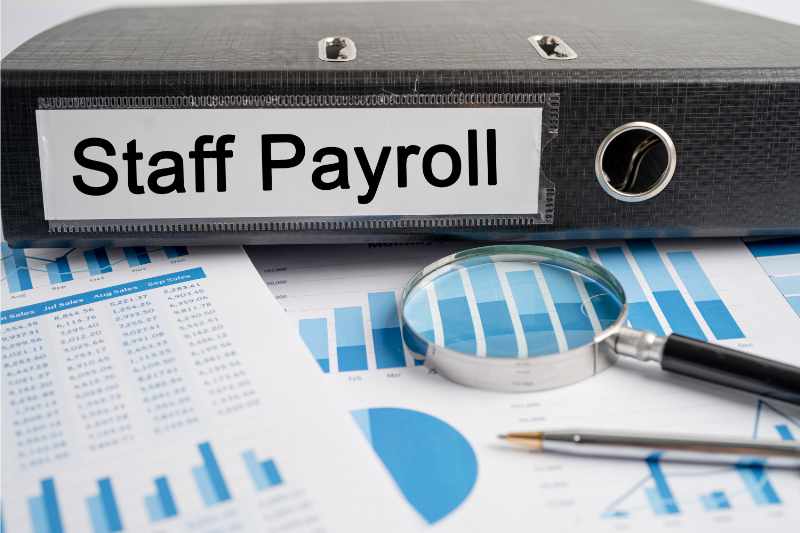Key takeaways
- Multifamily operating expenses are the unavoidable costs that come with managing a multifamily property.
- Expenses can include property taxes, maintenance, utility costs, and payroll for employees.
- Your multifamily expense ratio is usually between 60% and 80% of your income.

Disclaimer: This content is for informational purposes only, you should not construe any such information as legal, tax, investment, financial, or other advice. Nothing contained on our site constitutes a solicitation, recommendation, endorsement, or offer by ButterflyMX or any third-party service provider. ButterflyMX is not a financial adviser. You should always seek independent legal, financial, taxation, or other advice from a licensed professional.
Navigating multifamily operating expenses is an essential part of real estate finance. Hands-on management of a multifamily property involves continuous spending. When properly managed, your multifamily operating expenses will serve to increase the return on your investment instead of eating a hole in your wallet.
In this guide, we’ll go over what multifamily operating expenses are. Next, we’ll review the top multifamily operating expenses that you’ll encounter at most properties. Finally, we’ll review a good multifamily operating expense ratio to aim for.
This post covers:
- What are multifamily operating expenses?
- What is included in operating expenses for a rental property?
- What is a good operating expense ratio for a rental property?
What are multifamily operating expenses?
Multifamily operating expenses (OpEx) are the costs of running your multifamily property. These expenses include not only maintenance but marketing and renovating the building as well. In short, every dollar you put into your property counts as a multifamily operating expense.
It’s important to understand what your operating expenses are so that you can calculate your property’s net operating income (NOI).
You should know the:
- Cost per unit. This is what each unit costs you to maintain.
- The operating margin. The same as an expense ratio, this is the cost to operate your property minus your income.
It’s crucial to understand a multifamily property’s operating expenses and its NOI to make sure you’ll eventually have a positive return on your investment. If you determine that the operating expenses are too costly, then you might not want to go through with an investment.
Learn how to invest in multifamily real estate:
What is included in operating expenses for a rental property?
Becoming familiar with your property’s possible operating expenses can help you determine the real estate metrics needed to guarantee a positive return on your investment.
Multifamily operating expenses include:
1. Payroll
Depending on how hands-on you are with your property, you’ll likely have a number of staff who will be helping you manage your property.
Staff can include:
- Property managers
- Janitors
- Front desk personnel
- Security guards
- Leasing agents
All of these staff members will require a steady payroll. You’ll want multiple personnel for each position. Time (and expenses) will need to be accommodated for training. You’ll also want to consider benefits for certain roles, such as healthcare and vacation days.

2. Utilities
While residents will pay their own utilities, you’ll still need to set aside payments for electricity, water, and heating in the public sections of your property, such as the front lobby and other common rooms.
It’s important to familiarize yourself with the average rent by state in order to make the necessary calculations toward the average profit per apartment unit. Many landlords factor utility costs into the rent.
3. Marketing
Marketing and advertising costs can be either one of your largest or smallest multifamily operating expenses. It all depends on the size of your property, the number of renters needed to fill vacancies, and your turnover rate.
Regardless, when you’re first leasing up your building, you’ll need a marketing push. Marketing can be as simple as posting listings on a website such as Zillow. Or it can be as complicated as full-blown digital and print advertisements.
Remember: Renters are the key contributors to a positive return on investment. Finding the right residents who will rent with you for a long time can be worth additional marketing efforts and expenses.
4. Maintenance
Maintenance is always going to be a big component of managing a property whether it’s old or new.
Maintenance for a property can include but isn’t limited to:
- Lawn care
- Preventative maintenance
- Safety inspections
- Painting
- Testing the sturdiness of the roof, handrails, staircases, and doors
Maintenance costs will depend on who you hire for each task (and whether you take on any of it yourself).
5. Replacement purchases
This is where CapEx (capital expenditures) comes in handy. Replacement purchases are planned purchases outside the normal yearly balance of your expenses.
For example, roofs last between 10 and 12 years, and purchasing one would definitely count as a CapEx expense.
Other replacement purchases include:
- Windows
- Doors
- Gutters
- Lightbulbs
- Laundry machines
6. Property taxes
If there’s one thing you can be sure of, it’s that property taxes are unavoidable. However, come tax season, there are a number of write-offs that you can take advantage of.
Every expense used to renovate, maintain, or manage your property can be written off. Think back to everything we’ve covered so far. Odds are that’s quite a bit of money when you add it all up.
What is a good operating expense ratio for a rental property?
Apartment operating costs vary greatly from building to building. Before investing in any multifamily property, you should study historical data and come up with a series of averages on which to base your judgment.
For example: Pay attention to the average utility costs for the area the building is located in, typical maintenance fees, and so on.
To calculate your expense ratio, you divide your total yearly operating expenses by your yearly rental income.
Expense ratio = Total yearly operating expenses / yearly rental income
The average ratio is 60% – 80%. But what does this mean, exactly?
If your income is $45,000, you’ll spend between 60% and 80% of that on operational expenses.
What is a good percentage for operating expenses?
A good percentage will always be the lowest percentage (such as 60% above the listed average). However, don’t cheap out anywhere when it comes to your operating expenses. You don’t want a positive ROI for one year to lead to a negative one shortly thereafter.







